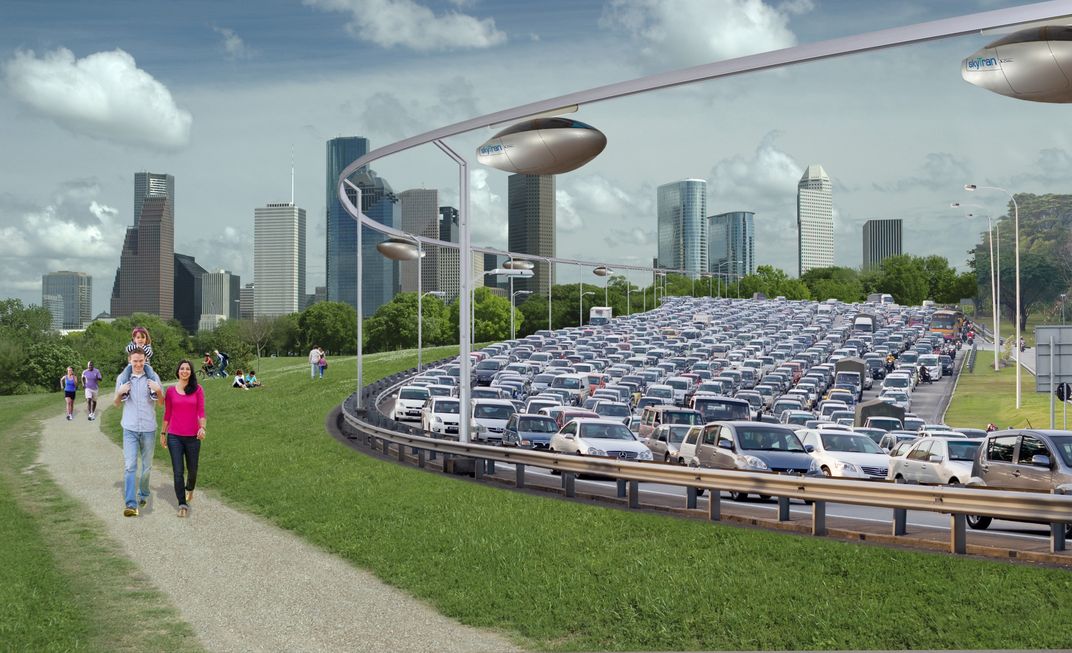Cabs of the Future Won’t Have Drivers
Recent moves by Uber and Google may foreshadow a battle over who will control fleets of autonomous cars on city streets
With innovation often comes the casting aside of familiar things—landlines, the simple pleasure of figuring out a map, getting other people to take pictures of you.
But are we ready for a future without cab drivers?
That’s right, no more cabbies. Based on recent news from both Uber and Google, driverless cabs would appear to be our destiny. Last week, Uber, the ride-for-hire company, announced that in partnership with Carnegie-Mellon University (CMU), it will open a research center in Pittsburgh that will focus on, among other things, “autonomy technology”—in other words, driverless cars. The university’s highly-regarded Robotics Institute has been researching autonomous vehicles for years now, and, according to one report, Uber plans to hire dozens of CMU scientists to work in the center.
This shouldn’t come as a big surprise considering that Travis Kalanick, Uber’s CEO, made it clear during a conference last year that he thinks his company’s drivers will one day go away. “The Uber experience is expensive because it’s not just the car but the other dude in the car," he said. "When there’s no other dude in the car, the cost gets cheaper than owning a vehicle.”
What makes Uber’s dive into robotics research that much more intriguing is that one of its biggest investors has been Google, which, of course, has been the pacesetter in the race to develop road-ready driverless cars. Just a year and a half ago, Google invested more than $250 million in Uber, and its chief legal officer is still on Uber’s board of directors. On top of that, Uber’s smartphone app used by its drivers and riders is based on Google Maps.
Learning to share
So, why is Uber taking the plunge? Maybe because Google is planning to get into Uber’s business. At least that’s what a report by Bloomberg earlier this month intimated, noting that Google is refining a ride-sharing app created by one of its engineers. A later blog in the Wall Street Journal suggested instead that the app is more a tool being used by carpooling Google employees than a big strategic gambit.
Still, Google no doubt sees how a ride-for-hire app could turn a fleet of driverless cars into something much more. At the North American International Auto Show in Detroit last month, Chris Urmson, who’s in charge of Google’s Self-Driving Car Project, described a future in which people would share autonomous vehicles. You'd contact the car and it would show up and take you where you want to go. (Or, if you have a future version of the Google Now app—Google’s personal assistant—the car would already know your destination and when you needed to be there.) The vehicle would then move on to serve other riders, staying in fairly constant motion, instead of sitting idle, which as Urmson pointed out, is what many cars do most of the time.
Conceivably, a fleet of shared vehicles could replace cabs. In fact, that’s just the scenario outlined in a 2013 study on “transforming personal mobility” from Columbia University’s Earth Institute. It concluded that 9,000 shared robotic vehicles hailed by smartphones could handle the same capacity as 13,000 cabs in Manhattan—but with an average wait time of only a minute compared to a typical five-minute wait for a taxi.
Such a transformation of city vehicles could also dramatically shrink the need for parking spaces, which can take up one-third of the land area in a city, according to Eric Jaffe, editor of the e-book The Future of Transportation. He contends that one driverless taxi could replace the need for at least a dozen privately owned cars.
A group of test riders (in the video, above) got a feel for what it might be like to use a driverless cab when Google showed off it prototype vehicle last year.
Booking pods
In Tel Aviv, they’re taking this concept to another level—driverless cabs on tracks above city streets. It’s called SkyTran, and though it may seem like a 21st century version of elevated transit, it will be different in some very basic ways. The vehicles will be two-person pods, not trains, and you would book them on your smartphone. You let the system know at which stations you want to be picked up and dropped off, and the pods do the rest.

SkyTran is building a 500-meter test loop on the campus of Israel Aerospace Industries that is expected to be ready by the end of the year. The pods, powered through passive magnetic levitation, would hit a top speed of about 45 miles per hour, while using about a third of the electricity of a hybrid car.
If all goes well, the plan is to build another 12.5 miles of track around Tel Aviv and open SkyTran to the public in another three years. After that, similar systems are being considered in France, India and San Francisco.
Will it catch on? Joe Dignan, a British expert on “smart cities,” thinks so. “It will get the market in the mood for autonomous vehicles," he told the BBC. "It is not too scary, is cheaper than building out a train line and uses part of the urban landscape—20 feet above the ground—that isn’t being used.”
/https://tf-cmsv2-smithsonianmag-media.s3.amazonaws.com/accounts/headshot/randy-rieland-240.png)


/https://tf-cmsv2-smithsonianmag-media.s3.amazonaws.com/accounts/headshot/randy-rieland-240.png)